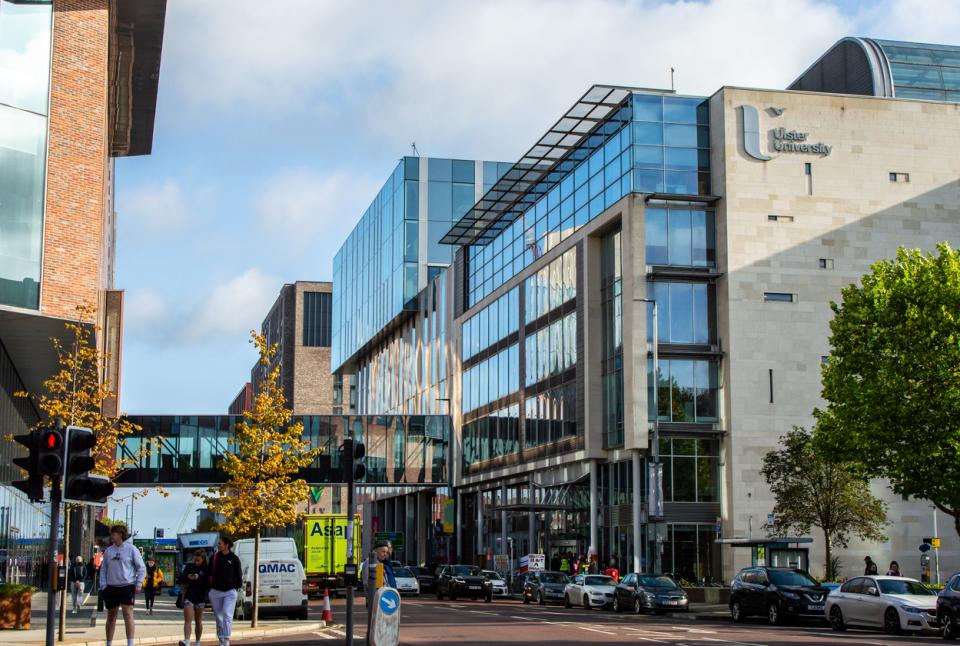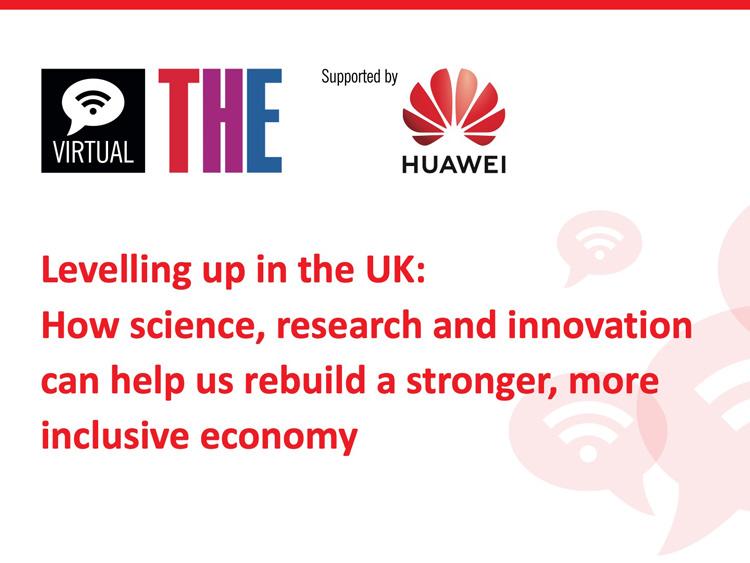The relocation of Ulster University to a new campus, bringing 15,500 staff and students to North Belfast in 2022, was the most significant regeneration project in the city since the Good Friday Agreement in 1998. It was one of the largest capital projects in higher education in Europe and had a significant economic, social and cultural impact on the region.
Our university is one of the most complex large institutions within the UK, successfully maintaining a dual focus on research and teaching while driving exemplary social mobility and civic engagement.
This dual focus was a critical dimension in the decision to relocate. It was vital to meaningfully integrate the university into the community, drive the regional economy and create opportunities for all.
We faced two major challenges:
- managing the impact of constructing a 1 million sq ft development just a few metres from a residential community
- making the university a meaningful and beneficial partner in an area where only 3.6 per cent of residents are enrolled in higher education – the lowest in UK.
Here, I provide a summary of how we addressed these challenges with valuable lessons for other institutions. The solution in such a complex environment is never single nor linear. It is multifaceted, with the need for robust processes, measurable outputs, targeted stakeholder engagement and co-design, and a focus on people. We worked intensely with neighbours, partners and stakeholders in the region, integrating external agencies on practical problem-solving to ensure the benefits were realised.
Five core delivery strands were identified:
- Creating a lasting, trusted shared space for issue resolution and relationship building.
- Minimising the traffic impact and managing a 70 per cent modal shift among university staff and students from private cars to public transport and active travel.
- Raising educational aspiration and achievement among local young people.
- Identifying, developing, delivering and raising awareness of tangible benefits available to the region from the new campus, creating opportunities for all to engage with and benefit from the university.
- Creating training and employment opportunities for the community.
How the plan was implemented
The tools and activities that were developed as delivery platforms and the resultant impact:
A Campus Neighbourhood Forum for issue resolution and relationship-building
A multiagency safety group – consisting of local community representatives, residents, police, local council, government officials, political representatives and contractors working in the area – co-designed a contractors’ community work programme. Initially, this focused on managing issues such as the impact of construction, parking and antisocial behaviour.
As the group matured and the work programme developed, efforts turned to joint lobbying initiatives such as traffic calming by securing additional parking restrictions in residential areas; creating volunteer opportunities such as students helping residents tend their gardens; community tours for students led by residents; mental health support for young people through sport and support from university staff for outreach activities to increase educational aspiration and achievement.
- Space and place spotlight guide: rethinking the university campus
- Five tips to enhance your institution’s civic engagement by working with public libraries
- THE Awards 2024 spotlight: learn from the best in UK and Irish higher education
A daily issue resolution system enabled an immediate response to antisocial behaviour and parking issues. All members of the group and additional residents have a direct phone line to university staff by which they can report issues, day or night. These calls are triaged and passed to the relevant government department, council, contractor or police.
As a result, dangerous activity on construction sites after hours has been reported and immediate action taken, hundreds of parking matters have been resolved and local noise issues managed.
A focused communications campaign encouraging public and active travel
We harnessed social media, community engagement, partnership with public, sustainable and active transport agencies and parking enforcement to achieve a 70 per cent modal shift – with 69 per cent now using public transport and the remaining 1 per cent moving to active travel, such as cycling.
Activities that underpinned this seismic shift included:
- A themed social media campaign by a local Ted talker on the environmental, financial, physical and mental health benefits of sustainable and active travel. The campaign’s theme song Getting There was later used by regional transport agency Translink.
- WhatsApp and Instagram takeovers by Translink to offer staff and students bespoke travel-planning sessions, achieving more than 140,000 impressions.
- A dedicated SharePoint site that became the most visited site across the university, with about 20,000 visits per month.
- An active travel hub on campus.
- “Leading by example” self-filmed public transport journeys to campus by senior leaders.
A research-backed outreach programme in local schools
The university’s “Taking Boys Seriously” longitudinal research project seeks to uncover the systemic and personal barriers that prevent young men flourishing in educational settings. With the aim of raising educational aspiration and achievement among adolescent boys, this work developed 10 key principles for working with boys. It has since worked with 36 research sites, 450 boys and more than 120 educators to develop and embed these principles. Within one school, this led to:
- The percentage of pupils achieving grades A to C has risen from 53 to 70 per cent.
- Number of pupils achieving five GCSEs with English and mathematics has nearly doubled.
- 49 pupils received offers of higher and further education places and 38 chose Ulster University.
- Percentage of pupils getting three good A-level grades has risen from 30 to 70 per cent.
- A to AS level results were the best in the history of the school. Every boy passed every exam.
A Community Benefit Framework
Co-designed by the university with residents and community representatives from the designated Neighbourhood Renewal Partnerships that border the Belfast campus, the benefit framework is now operational with 25 active projects including:
- Research into quality of life to maximise the benefits of city centre development for all stakeholders;
- Working with the Great Place Heritage Cluster to maximise the value of physical assets on Clifton Street, Crumlin Road and Antrim Road by supporting their ongoing development and hosting local events such as an Arts Festival Programme.
- Disseminating the key findings of the ‘Fair Start: Report on Tackling Educational Inequalities’ across North Belfast, as the basis for shared interventions and outreach work
- An Access Academy to ensure the university’s programme of academic outreach supports the school curriculum and is available online to all schools and pupils in Northern Ireland.
Social clauses were embedded in construction contracts
This resulted in 5,361 weeks of training, placements and apprenticeships for local people being delivered, equivalent to 103+ years.
The relocation and opening of the Ulster University Belfast campus brought together education and research excellence, a strong focus on sustainability and civic responsibility and a commitment to deliver for students, staff and the community alike.
By prioritising people, place and partnership, driving the regional economy and creating opportunities for all, the landmark campus was opened not in a community but with a community, embracing the once in a generation opportunity to change lives for a community in transition.
Paul Bartholomew is vice-chancellor of Ulster University.
Ulster University was named University of the Year at the Times Higher Education Awards 2024 #THEAwards. A full list of shortlisted candidates can be found here.
If you would like advice and insight from academics and university staff delivered direct to your inbox each week, sign up for the Campus newsletter.




comment